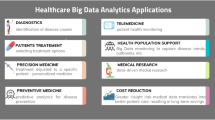Abstract
Personal health record systems (PHR) assists people to access, manage and share their own health information. PHR is getting increasingly popular these days. However, there is not even a single PHR system being deployed in Saudi Arabia considering the special needs of Saudi Arabian society. Before a PHR system is deployed, it is mandatory to know the awareness and willingness of the people so that usability of the system can be defined. In this research, we have conducted a survey in Saudi Arabia to know the level of awareness of PHR systems and the willingness of people to adopt and use such systems. In order to conduct the survey, a total of one hundred and sixty four individuals from different age groups were selected randomly keeping in perspective the target population. For reaching to the ends that stretch beyond the immediate data alone, we have used the inferential statistics for our research work. During our inferential analysis, we have selected the cross-tabulation method for comparing two different variables. The cross-tabulation of categorical and ordinal data is a good tool for summarizing demographic information and searching for blueprints. We used the Chi-Square tests to find out whether an association (or relationship) between 2 categorical variables in a sample is likely to contemplate a substantial association between these 2 variables in the population. The results indicate that the level of awareness about PHR systems is still low in the Saudi society but the people are willing to use a personalized electronic system to manage their own health. The results further indicate that the availability of the internet is a major barrier to the realization of PHR systems. These results encourage to adopt a Cloud-Dew Architecture based Layered PHR system that goes beyond the trivial network/storage/service concept to a new micro-service concept offering high scalability and availability in vertically distributed computing hierarchy.





Similar content being viewed by others
References
21st Century Health Information Act of 2005, H.R. 2234, 109th Congress; Health America Act of 2005, S. 1503, 109th Congress
Borycki EM, Househ MS, Kushniruk AW, Nohr C, Takeda H (2012) Empowering patients: making health information and systems safer for patients and the public. Yearb Med Inform 7(1):56–64
Chrischilles EA, Hourcade JP, Doucette W et al (2014) Personal health records: a randomized trial of effects on elder medication safety. J Am Med Inform Assoc 21:679–686
Dontje K, Corser W, Holzman G (2014) Understanding patient perceptions of the electronic personal health record. J Nurse Pract 10(10):824–828
Dunlop L (2007) Electronic health records: interoperability challenges patients’ right to privacy, 3 Shidler J. L, Com. & Tech. 16, at <http://www.lctjournal.washington.edu/Vol3/a016Dunlop.html>
Fricton J, Davies D (2009) Personal health records to improve health information exchange and patient safety. Retrieved on [10 March 2015] from: http://www.ahrq.gov/professionals/quality-patient-safety/patient-safety-resources/resources/advances-in-patient-safety-2/vol4/Advances-Fricton_21.pdf
Friedman C, Wyatt J, Ash J (2006) Evaluation methods in biomedical informatics. Springer, New York
HIMSS (2006) HIMSS federal HIT legislative crosswalk, updated Sep. 22 http://www.himss.org/advocacy/news_crosswalk.asp
Imran M, Hlavacs H, Khan FA et al (2018) Aggregated provenance and its implications in clouds. Futur Gener Comput Syst 81:348–358. ISSN 0167-739X. https://doi.org/10.1016/j.future.2017.10.027
Information Technology for Health Care Quality Act, S. 2907, 108th Congress; Patient Safety and Quality Improvement Act, H.R. 663
Khan A, Rahman A, Qazi L (2016) The relationship between internet usage, socioeconomic status, subjective health and social status. Bus Econ Rev 8(SE):67–82
Krist AH, Woolf SH (2011) A vision for patient-centered health information systems. JAMA 305(3):300–301
Li J (2015) Ensuring privacy in a personal health record system. Computer 48(2):24–31
Liu L, Shih P, Hayes G, Bren D (2011) Barriers to the adoption and use of personal health record systems. ACM 978-1-4503-0121
Peters K, Niebling M, Green T, Slimmer C, Schumacher R (2009) Consumers compare online personal health record (PHR) applications. User Centric
Smolij K, Dun K (2006) Patient health information management: searching for the right model. Proc. Perspectives in Health Information Management
The Health Information Technology Act of 2005, S. 1227, 109th Congress. Available at http://www.thomas.go
Vance B, Tomblin B, Studeny J, Coustasse A (2015) Benefits and barriers for adoption of personal health records. Paper presented at the 2015 Business and Health Administration Association Annual Conference, at the 51st Annual Midwest Business Administration Association International Conference, Chicago, IL
Winkelman W, Leonard K (2004) Overcoming structural constraints to patient utilization of electronic medical records: a critical review and proposal for an evaluation framework. J Am Med Inform Assoc 11:151–161
Khan FA, Han Y, Pllana S, Brezany P (2008) Provenance Support for Grid-Enabled Scientific Workflows. 2008 Fourth International Conference on Semantics, Knowledge and Grid, Beijing, pp. 173–180. https://doi.org/10.1109/SKG.2008.86
Author information
Authors and Affiliations
Corresponding author
Additional information
Publisher’s Note
Springer Nature remains neutral with regard to jurisdictional claims in published maps and institutional affiliations.
Rights and permissions
About this article
Cite this article
Khan, F.A., Rahman, A., Alharbi, M. et al. Awareness and willingness to use PHR: a roadmap towards cloud-dew architecture based PHR framework. Multimed Tools Appl 79, 8399–8413 (2020). https://doi.org/10.1007/s11042-018-6692-z
Received:
Revised:
Accepted:
Published:
Issue Date:
DOI: https://doi.org/10.1007/s11042-018-6692-z




